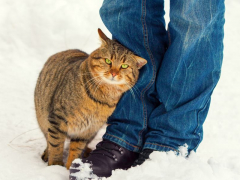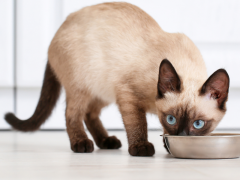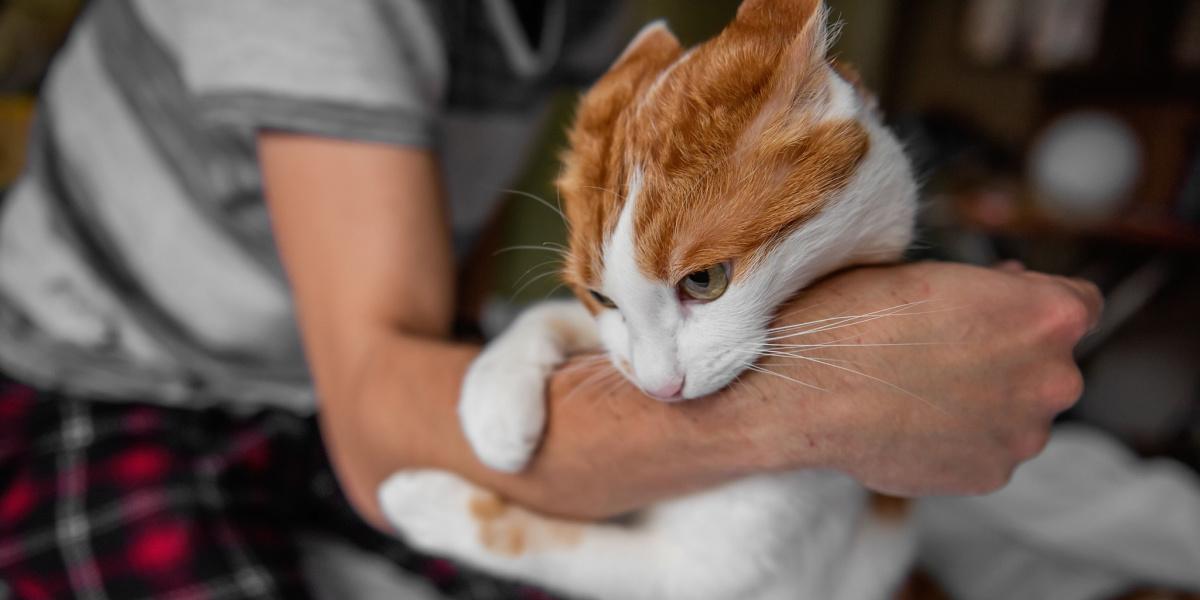
Cats are most certainly their own bosses, and pleasing their pet parents comes very low on their agenda. It’s sometimes easy to mistake this as a lack of affinity for their human family, but this is simply not true.
Key Takeaways
Some individual cats and certain cat breeds are more cuddly and affectionate than others.
Cats that don't like cuddling might find the action threatening or uncomfortable, especially if they did not get adequate socialization as a kitten.
Increasing positive interactions with your cat and respecting their likes and dislikes might make them more likely to come to you for cuddles and strengthen your bond.
As highly functioning beings, we tend to anthropomorphize, misguidedly using human thoughts and feelings to explain our cat’s behaviors. But cats are different from dogs and from us.
Cats might show their affection in alternative ways to those we expect. Previous studies of cats with humans have shown that cats meow more in the presence of humans than other cats. And we all know that our cats seek our attention when they want food, a warm bed, or just a tickle under the chin. Sometimes the drive for interaction fulfills a basic need; sometimes, they just want a bit of our love!
When you have a cat that does not like being cuddled, what does this mean?
Is it something that you are doing wrong, or is there something that you can do to get your cat to snuggle up in your arms more willingly? The secret is to understand why your cat behaves this way and respect their boundaries. If your cat wants a cuddle, they will then feel as relaxed as possible to seek one out.
Let’s look at the top reasons why your cat may not want to cuddle with you.
1. Cuddling Makes Your Cat Feel Trapped
Cats still have some instincts inherited from their wild ancestors. Holding and restraining cats might be perceived as a threat that can send them into fight or flight mode. Either fight and defend themself against the attacker or flee as quickly as possible.
If fleeing is not an option, a cat may become aggressive or internalize this fear and freeze like a statue. This is why behaviorists always recommend that we socially interact with our cats on their terms whenever possible.
If your cat actively seeks you out and climbs onto your lap for a cuddle, then bingo! You are one of the lucky ones with a cat who loves a human hug. Just remember to always respect their decision when cuddle time is over.
2. You’re Petting Them Wrong
It’s easy to forget how we approach our cats is crucial. Cats love to be up high, overlooking their kingdom, with good reason. For territorial creatures, this instinct is an integral part of their survival. From their lofty vantage point, they can survey any threats with plenty of warning, and when the coast is clear, they can completely relax. When they are at lower levels, any approach from above can be highly intimidating for them.
Patting cats is generally not an option. In fact, approaching cats in a confident and physical manner is very unsettling for them. You’ll notice that most cats will flee as soon as children come close to them, and this is why.
A better approach is to lower yourself slowly to their level, allowing them to move to you first and then gently rubbing their face, temples, and ears. This technique appears to be pleasurable for many cats. Eye contact may also be unsettling, so avoid this if possible. And, if your cat is hanging out on top of the kitchen cabinets, then respect this; they need their space!
3. Your Cat Was Less Socialized as a Kitten
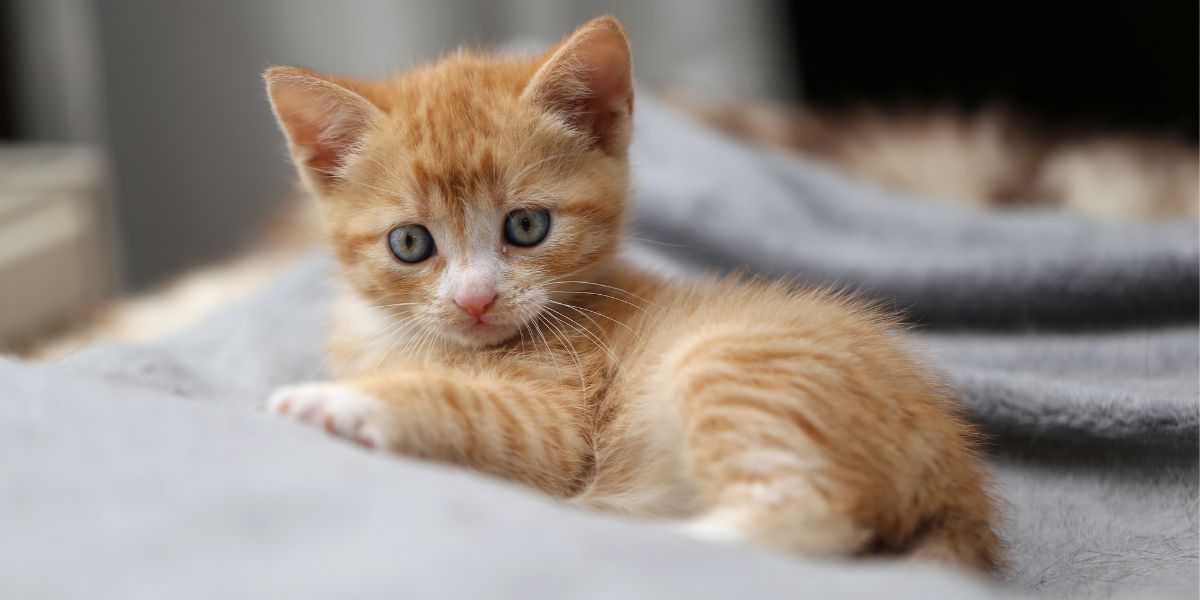
Cats may be cautious with human interactions if there was a lack of socialization as a kitten.
Some cats are around people from a young age, particularly if they are reared in a home with children or several adults. This allows them to be more confident that social interactions with people are positive and that they are used to a mixture of activities, noises, and scents in the home.
Being picked up might be something they have become used to or maybe even enjoy if it leads to a positive outcome, such as food or snuggles. If your cat was hand-reared as a kitten, they might even be supremely confident with people. However, this confidence might manifest as petting aggression during over-zealous play or if your cat feels threatened.
Cats that have not been socialized while young may be timid, particularly with strangers. This is particularly true of cats that have been rehomed and are not used to living with families.
This behavior can be ingrained, and while you can support your cat over a slow period of integration into the family, it would be unfair to expect them to be the life of the party when all your friends come to visit. Some feral cats living on the streets or farms will understandably never manage the transition to a family home.
4. Possible Previous Trauma
Previous trauma does not always have to be as dramatic as it sounds. Any human interaction your cat perceives as negative will shape their future interactions with people. For example, a 10-minute battle being shoved into a cat carrier or a painful injection at the vet clinic can be enough for your cat to create negative associations with humans.
Many rescue cats will have had multiple negative experiences; sudden changes in housing and families can be traumatic. Cats that have been roughly handled or witnessed human aggression might be most affected.
Suppose you think your cat has experienced previous trauma. In that case, it is essential that you respect their limitations and don’t force them into situations where they feel highly stressed.
If visits to the veterinarian are becoming problematic, have a chat with your vet about how you can reduce your cat’s anxiety before and during appointments.
5. Your Cat Is Unwell or in Pain
Some cats who are usually very affectionate will have an abrupt personality change when they are experiencing illness or pain. When I advise owners on how to detect pain in their cats, I will always mention hiding away or signs of distress on handling. These behaviors can be subtle and should never be ignored.
Also, as cats get older, they can develop arthritis. And what once seemed an appealing lap to snuggle up on can feel more like a lumpy and uncomfortable old mattress.
Conversely, some older cats gravitate to spending more time at home and cuddling up with their owners, which gives them great comfort. If you suspect that your cat might be in pain, a trip to see your veterinarian is always recommended.
5. Something Is Causing Your Cat Stress
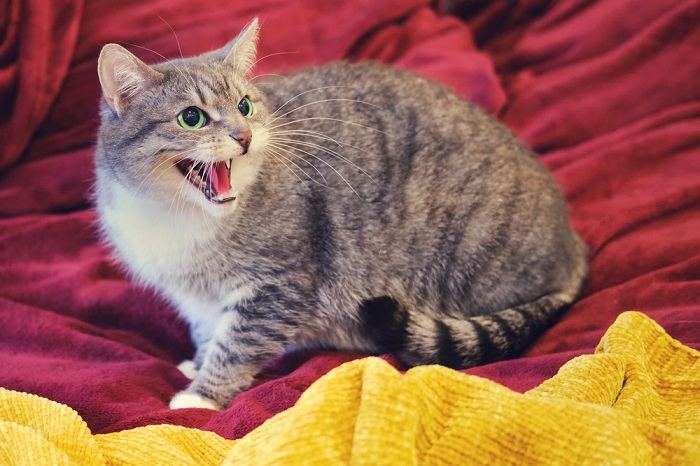
A stressed cat might be less interested in cuddles.
Cats are particularly sensitive to stress and changes in the home. The arrival of a new baby, another cat, or a puppy are common reasons your cat may be less inclined to seek you out for cuddles. After all, why put themself in harm’s way when they could be curled up sleeping somewhere far safer?
Don’t be disheartened, though. If you provide plenty of safe spaces for your cat to hide in and parts of the home that are “safe zones,” this stress should be minimized. Over time, your cat might learn when there is a safe window when the threat is removed, and the sofa is calling. Purring can be a great indicator that your cat is relaxed, but it is possible that purring can express anxiety, too, so be aware!
6. Other Factors
Evidence suggests that your cat’s lifestyle and home environment may influence how cuddly they are. Outdoor cats have been hypothesized to have less cuddly natures. This might be because indoor cats need more stimulation from owners, or maybe some cats are just more independent by nature and, therefore, more likely to be let out.
Also, the number of people, their gender, and their personality type may all affect a cat. It is suggested that cats favor calmer female owners for seeking affection. In contrast, more anxious female owners benefit the most from feline interactions. It is unclear why this is. It’s possible female owners are with their cats more often or feed them more regularly.
Cats as Companions
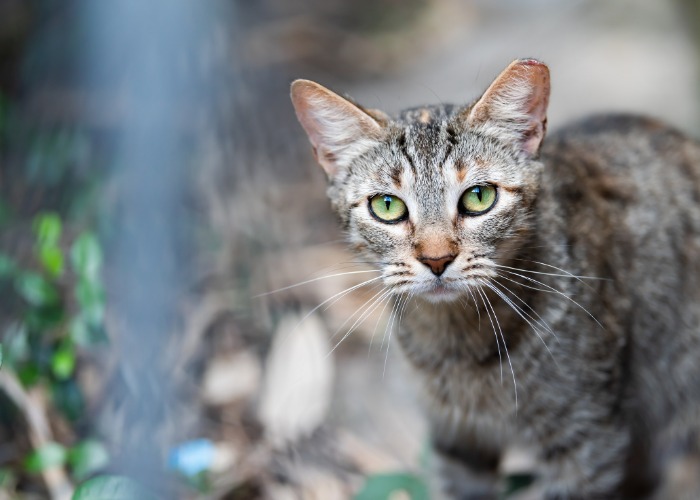
Some cats and cat breeds are more affectionate than others.
There is no doubt that despite their free-spirited nature, cats make a wonderful addition to a family. If you are thinking of introducing a cat to your home, I urge you to consider what characteristics are important to you and to do your research. You should aim to find the cat most suited to you, not forgetting to provide the home most suited to your special new family member.
Also Read: Can Cats Be Emotional Support Animals?
Frequently Asked Questions
Which breeds are most cuddly?
As you know, every cat is an individual, and there are no hard and fast rules. But, colloquially, patterns of personality traits do appear within different cat breed groups. Practitioners working with therapy cats will often choose to work with Siamese, Ragdoll cats, or Norwegian Forest cats. Siamese cats have a dog-like approach to their interactions with people; Ragdolls and Norweigian Forest cats are perceived to be calmer.
There is undoubtedly an indication that personality has a genetic basis, so it is worth spending time with one or both of the cat’s parents to get a feel for their character. You are more likely to get a docile, affectionate kitten if they come from parents of a similar nature.
How can I encourage my cat to be more cuddly?
Increasing positive interactions with your cat might make them more likely to come to you for cuddles and strengthen your bond. If you are not usually the person that feeds and plays with your cat, then start to make this part of your daily routine. Gently talking to your cat has been shown to bring about more positive encounters, and you will probably find that your cat chatters back to you!
Encourage your cat to come to you rather than approaching them, and reward them with toys and treats to help to build their confidence. Find out where your cat likes to be tickled and rubbed—most cats are not keen on being stroked along their backs, although some love this!
Finally, do not approach your cat from above or remove them from a high-up hiding spot. This could be perceived as threatening behavior and will certainly not endear you to them. Remember, cuddling should be pleasurable for both of you.
-
Turner DC. (2021). Unanswered Questions and Hypotheses about Domestic Cat Behavior, Ecology, and the Cat-Human Relationship. Animals (Basel). 11(10), 2823. Retrieved September 8, 2022.



